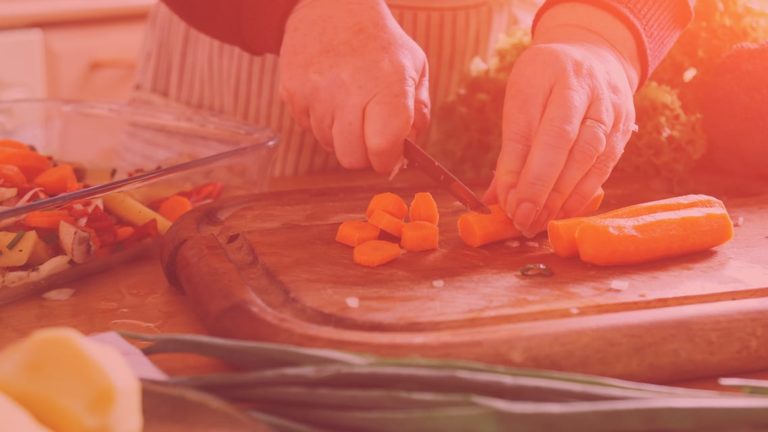How to Treat Burns, Cuts and other Cooking and Kitchen Injuries
November 30, 2016

The kitchen is one of the most popular rooms in your home as Friends and family gather to share meals and conversations. Perhaps some of your most treasured memories took place right there in that space beside your oven and refrigerator.
But people often forget just how dangerous the kitchen can be as well. No matter where you turn, you run the risk of going head-to-head with hot surfaces, sharp objects, and slippery floors.
It’s always better to be safe, rather than sorry. But how do you know which cooking injuries can be treated at home, and which require a trip to urgent care or the ER? We’ve got answers.
Burns and Cuts
Nearly all kitchen-related injuries fall under the categories of burns or cuts.
You can suffer burns from hot liquids, grease, or other substances. While being overly cautious is the best way to prevent burns, other ways to prevent this type of injury include keeping the flame or heat source on your stove at a reasonable level to avoid splatter. Whenever possible, use a lid and/or oven mitts as well.
Preventing and Treating Burns
The rush to put a great meal on the table can make those hot dishes dangerous. Prevent burns by taking care to always use oven mitts. Encourage your guests to gather in rooms other than the kitchen so that you’ve got plenty of room to keep them safe and look out for yourself.
Whenever you suffer a burn, the best initial at-home treatment is running the injury under cold water, for as long as possible, to prevent the burning from causing more damage to the skin tissues.
Burns caused by grease can be tricky, as they’re hotter than water burns, and burns caused by substances such as caramelized sugar can be difficult to treat, since the substance sticks to your skin. Putting ice or butter on the burn is not advised as it provides no benefit and can actually cause damage to the burned tissue. If there is any question about the burn’s severity, you can reduce your risk of infection as you prepare for evaluation by a provider by covering the area with a clean, dry cloth.
Preventing and Treating Cuts
Chopping or slicing key ingredients for your culinary masterpiece is another potential hazard. Make sure to keep knives sharp as dull ones can slip more easily and always slice away from your hand to prevent cuts.
The most common part of your body to get cut while cooking is your hand. If you suffer a cut to your hand, there are two factors to consider: The depth of the cut and the part of your hand that was injured.
Your hand is an extremely complex body part. Depending on depth and location, your injury may have punctured a tendon or important muscle. Generally speaking, cuts to the tips of your fingers or tops of your knuckles will not cause much long-term damage. However, cuts to your palm or fingers could have long-term effects.
If the cut is not too deep and is not located in a sensitive area of your hand, you can treat your injury by washing your hand with antibacterial cleanser, followed by mild soap and water. Use direct pressure to stop the bleeding. Then, apply antibacterial ointment and a clean bandage that will not stick to the wound.
However, if your cut is deep and bleeding profusely—or if it is located in a sensitive area—cover the wound with gauze (or a clean, dry towel), apply pressure, and then seek professional treatment immediately.
Eye Injuries
Your eyes are also susceptible to injury while in the kitchen. This is particularly true if you work with ingredients such as peppers, onions or other spices. When any type of substance packed with heat gets into the eye, it can cause irritation and even infection.
Many people take extra precaution when working with spices, by keeping splattering to a minimum. However, even an accidental swipe of your face with a hand exposed to a spicy substance is enough to cause pain and damage.
If one of your eyes becomes irritated while cooking, flush it out immediately with water. You should then have someone take you to the emergency room, so you can be checked out in case of possible infection.
Be a vigilant cook to avoid common injuries
When working in the kitchen, awareness is key. Never underestimate just how dangerous your cooking space can be. Aside from cuts, burns, and eye irritations, slips and falls are also fairly common injuries occurred in a kitchen.
All of these injuries can be avoided by being aware of your surroundings. It’s also a good idea to take a few cooking classes, to learn best safety practices, including how best to use a knife. And if something unexpected happens, come to an urgent care center near you and you’ll be back in the kitchen in no time!
